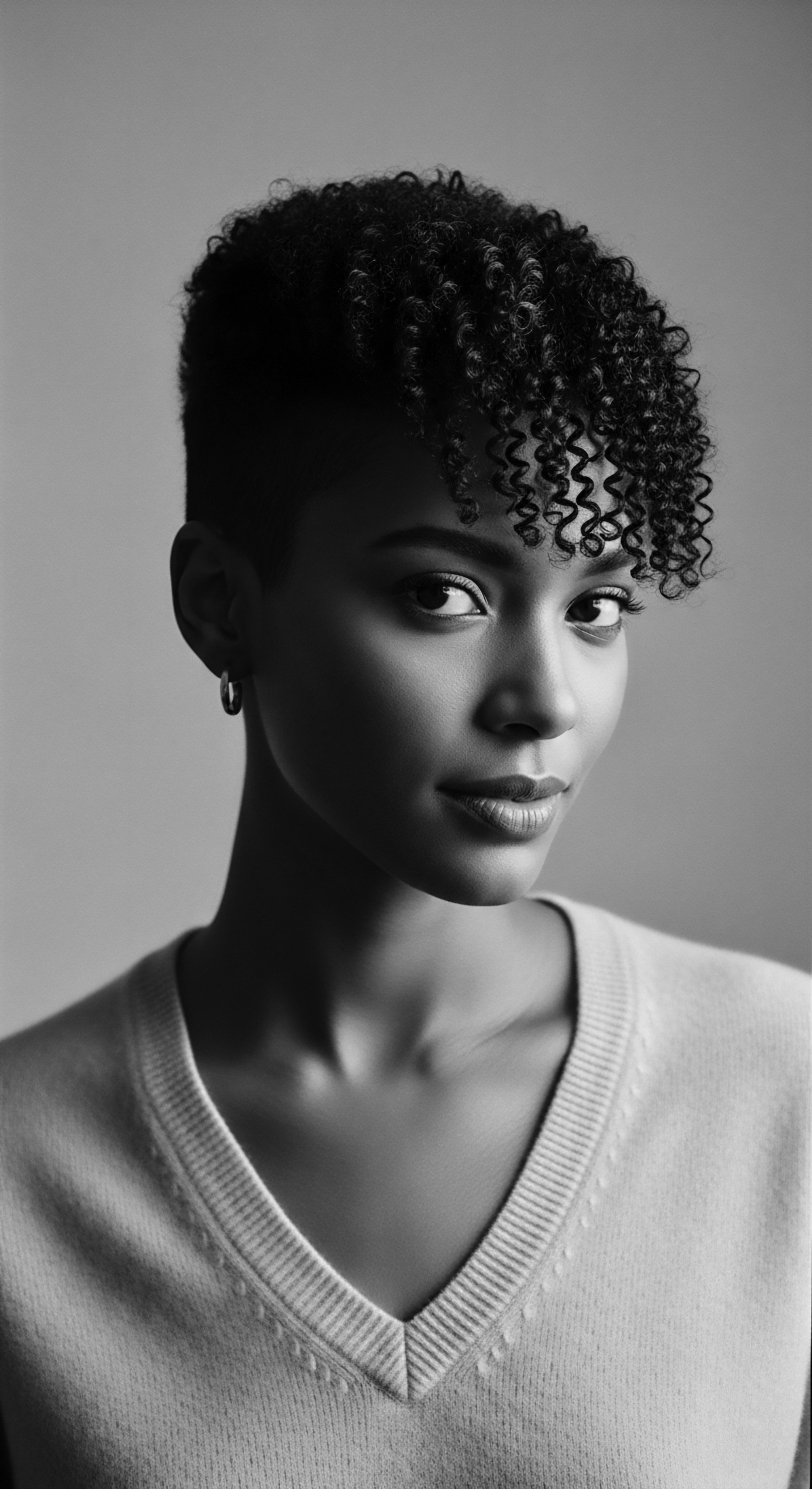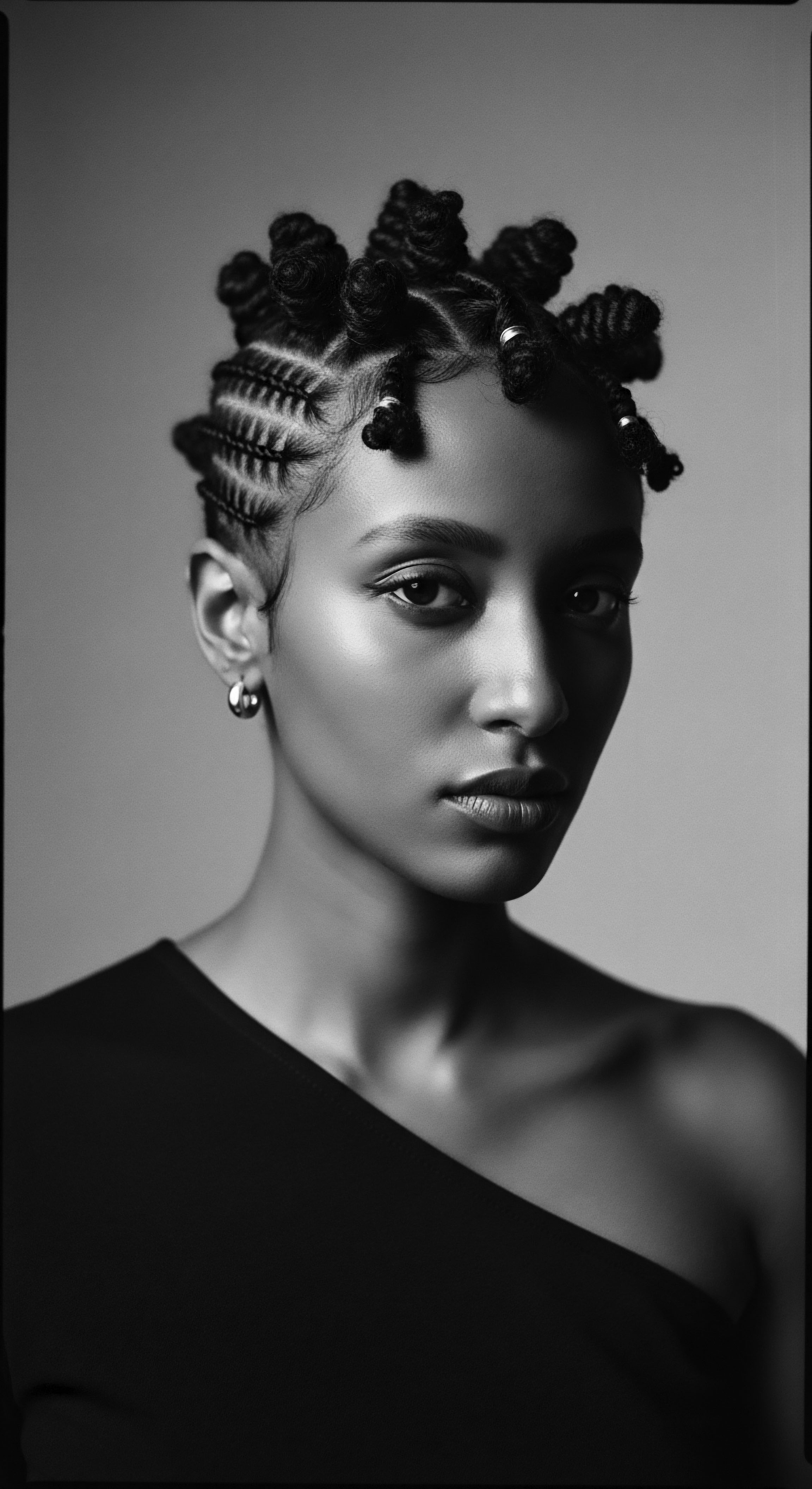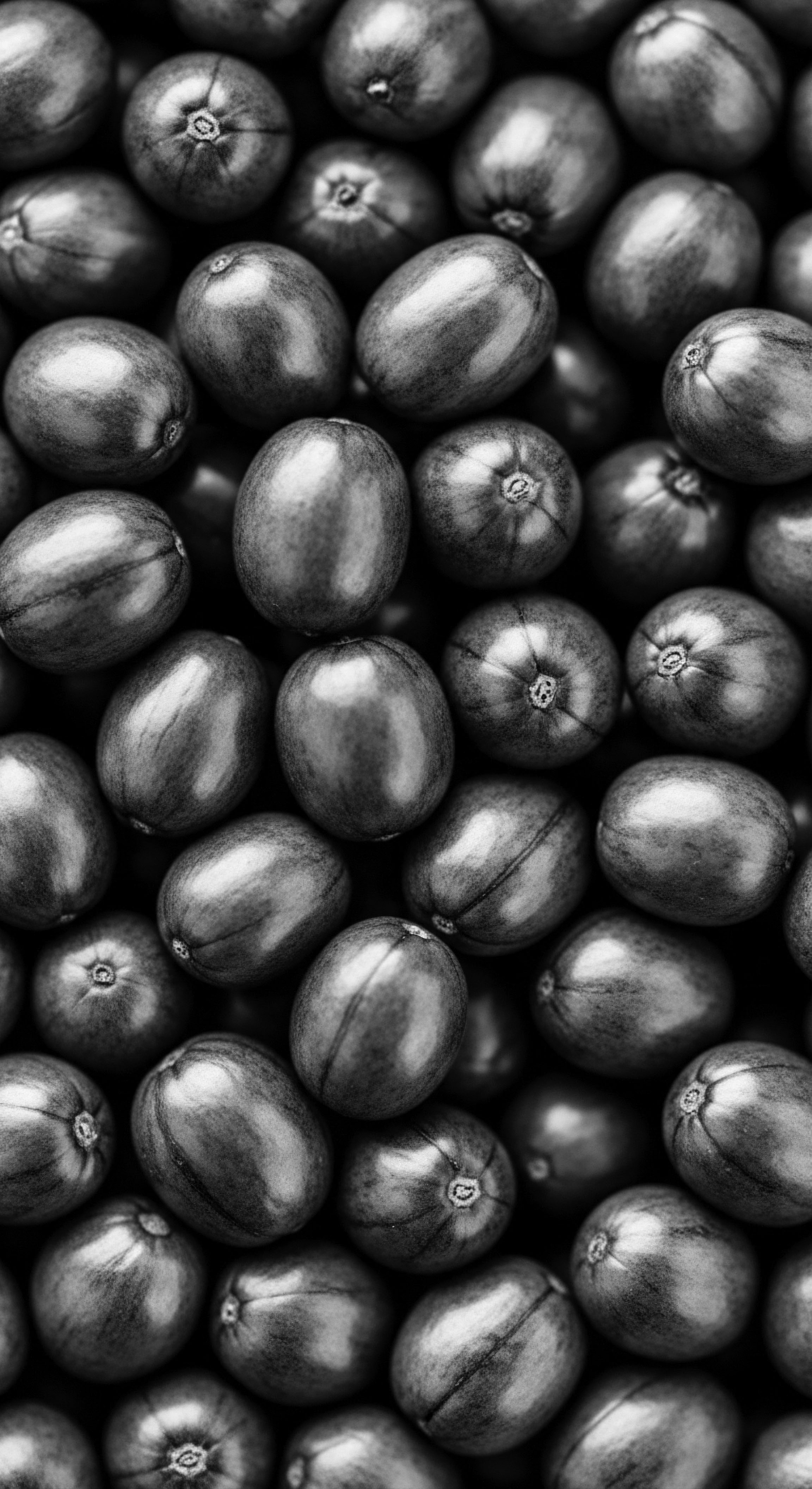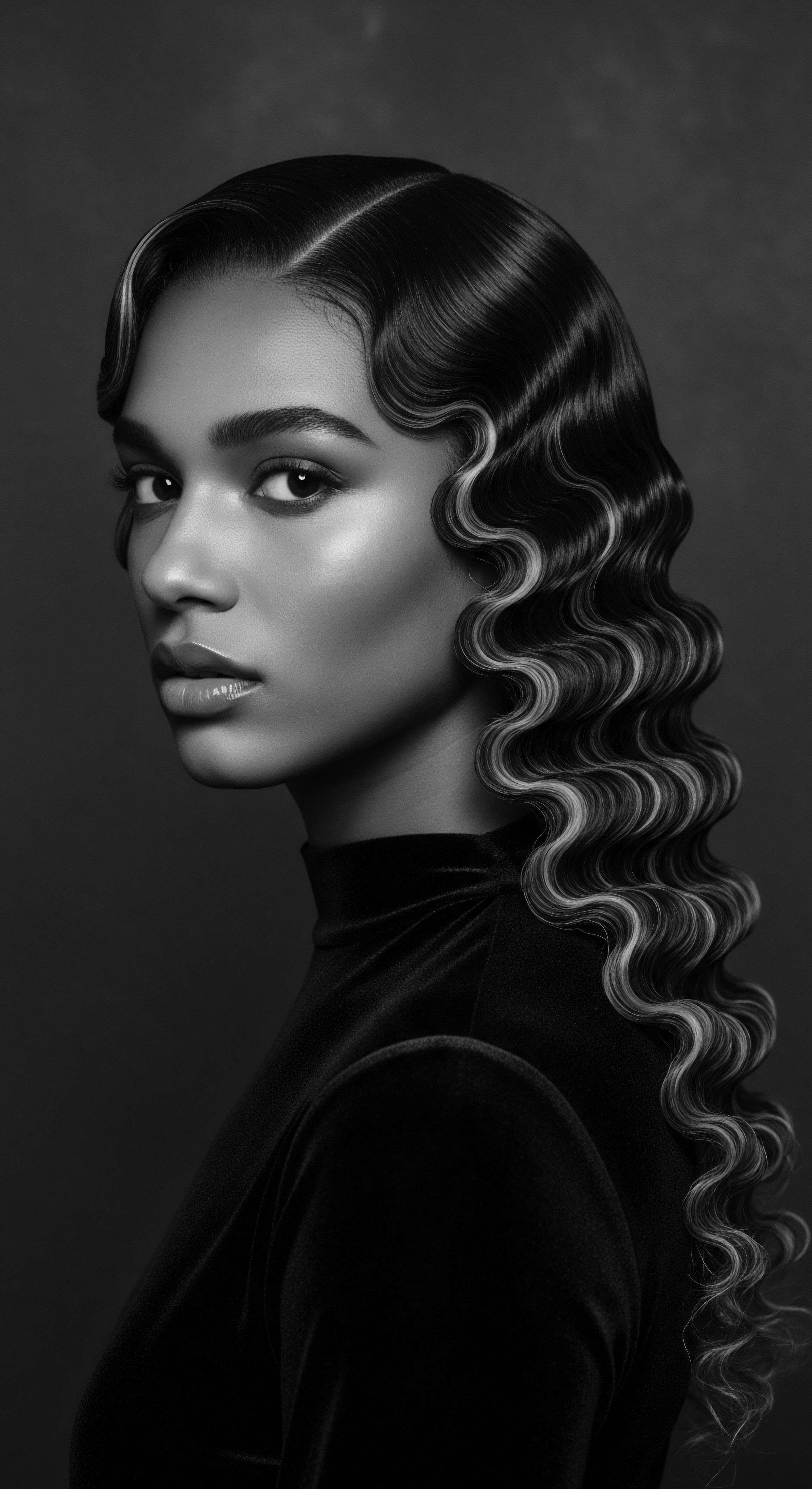
Roots
There is a knowing that runs deeper than memory, a whisper carried on the very helix of each strand, telling tales of sun-drenched earth, skilled hands, and the enduring spirit of our hair. For those whose crowns wear the magnificent artistry of coils, kinks, and curls, the question of ancient plant dyes and their interaction with textured hair is not merely a technical inquiry. It beckons us to consider a living legacy, a conversation with the very source of our being and the wisdom passed down through countless generations.
Did the vibrant hues harvested from earth’s bounty, those very pigments that adorned ancestors, leave their textured hair parched, brittle, and yearning for moisture? Or did the practices accompanying their application, steeped in ritual and understanding, offer a balance that modern eyes might fail to perceive?
Our journey begins at the microscopic heart of textured hair, a marvel of biological engineering. Unlike straight hair, the elliptical cross-section of a textured strand, coupled with a unique growth pattern, leads to more points of cuticle lift, a natural propensity for moisture to escape. It possesses fewer cuticle layers overall, and these layers often do not lay as flatly, which can affect light reflection and perceived luster. This inherent structure, a gift of adaptation across diverse climates, means textured hair demands a different kind of kinship, a care that respects its thirst and its intricate design.
Understanding this inherent architecture is the first step in deciphering the historical interactions with plant-derived colorants. Ancient peoples, though without the lexicon of trichology, understood its temperament through generations of observation. They recognized its need for replenishment, its desire for protective adornment, and the delicate dance required to keep its vitality.

Hair’s Ancestral Architecture
The very composition of our hair, primarily keratin protein, forms a robust canvas. Yet, the arrangement of those keratin bundles within the cortical cells varies significantly in textured strands, contributing to their unique elasticity and strength. This elastic quality allows for the remarkable spring and bounce we celebrate, but it also means the hair can be more susceptible to breakage if its moisture content is compromised. Plant dyes, at their core, interact with this protein structure.
Some, like henna, bind to the keratin, creating a layer that can, depending on preparation and aftercare, seal or, conversely, stiffen the strand. Others, often those used for lighter tints, might coat the outer cuticle. The efficacy and outcome, then, hinged not just on the plant itself, but on the accumulated wisdom of its application within specific hair traditions.
The structural uniqueness of textured hair, with its inherent thirst, shaped ancestral approaches to plant-based coloring.
Across continents, from the river valleys of the Nile to the vast savannahs of West Africa, and into the sun-kissed lands of the Americas, ancestral hands gathered botanicals. The wisdom inherent in these practices was not born of scientific treatises but of generations of lived experience, trial, and keen observation. They understood the earth’s pharmacy, the seasons of gathering, and the alchemy of preparation. For example, the use of certain plant materials for coloring often went hand-in-hand with ingredients known for their emollient or conditioning properties.
Think of the oils and butters consistently used in African hair care traditions—shea butter, cocoa butter, various nut oils. These were not mere additions; they were counterpoints, balancing agents to the potential effects of any drying agents. This holistic view, where coloring was part of a larger continuum of care and adornment, represents a profound connection to hair’s heritage. The intention was always to nourish, even when transforming.
The lexicon of textured hair care, too, holds whispers of these ancient ways. Terms like Coiling, Twisting, and Braiding describe not just styles, but methods of manipulating hair that protect its inherent moisture. Before the advent of modern chemistry, plant dyes were not simply applied; they were often integrated into these protective practices. Perhaps a dye paste was infused with oils before application, or a deep conditioning treatment followed the coloring process, a pre-emptive measure of care.
- Henna ❉ Sourced from the Lawsonia inermis plant, traditionally used across North Africa, the Middle East, and South Asia. Its lawsone molecule binds to keratin.
- Indigo ❉ Derived from the Indigofera tinctoria plant, providing deep blue hues, often combined with henna for darker shades.
- Amla ❉ Indian gooseberry, Phyllanthus emblica, often added to henna mixtures for its conditioning properties and to enhance color vibrancy.
These were not isolated applications but components of broader hair care systems, each element understood in relation to the others. The drying potential of a single ingredient was likely mitigated by the inclusion of others, or by the method of preparation, a testament to ancestral ingenuity. The profound knowledge passed down through oral traditions, through touch and observation, was a dynamic science, continually refined to honor the living crown.

Ritual
The act of coloring textured hair in ancient times was seldom a solitary or purely aesthetic endeavor; it was deeply interwoven with ritual, community, and the ongoing saga of care. To comprehend whether ancient plant dyes dried textured hair, we must peer through the veil of modern isolated product use and witness the full tableau of ancestral practice. Consider the intricate processes, the extended duration of applications, and the communal gatherings that often accompanied these transformations.
These were not quick fixes, but patient, deliberate acts, each step designed to honor the hair and the individual. The question shifts from a simple yes or no to a richer exploration of balance ❉ how did traditional methods mitigate the very challenges we perceive today?

How Did Ancestral Techniques Counteract Dryness?
The application of plant dyes like henna or indigo involved careful preparation of the hair and the dye mixture itself. Unlike modern synthetic dyes, which often use harsh chemicals to lift the cuticle for color penetration, most ancient plant dyes acted as stains, coating the outer layers of the hair shaft. This process, while less invasive, could still potentially leave the hair feeling rough or dry if not properly managed. Yet, traditional practices often incorporated ingredients that would seem counterintuitive to a ‘drying’ outcome.
Many plant dye recipes, particularly those from African and South Asian contexts, included nourishing elements. For instance, fermented rice water, renowned for its amino acid content and conditioning properties, could have been used as a rinse or even as part of the dye preparation. Clay, often found in hair masks in ancient Egypt, provided minerals and gentle cleansing.
The actual mixing of the dye itself often involved liquids that brought their own properties to the concoction. Instead of plain water, ancestral practitioners might have used herbal teas, fruit juices, or even fermented solutions, each contributing subtle conditioning qualities. The consistency of the paste was also key; a thicker, creamier paste would adhere better and might also contain more nourishing elements.
After application, the dye was typically left on for hours, sometimes overnight, covered to maintain warmth and moisture. This prolonged contact allowed the dye molecules to bind effectively, but also meant the hair was enveloped in a moist, often conditioning, environment for an extended period.
Beyond the dye mixture, the pre- and post-dye rituals were instrumental. Hair was often cleansed with natural saponins from plants before coloring, gently removing impurities without stripping. After rinsing the dye, a deep conditioning treatment was almost certainly applied. This might involve rich butters like shea or cocoa, infused oils, or mucilaginous plant extracts from ingredients like okra or flaxseed.
These practices, deeply rooted in ancestral wisdom, were designed to restore the hair’s natural oils and seal the cuticle, thereby mitigating any potential drying effects. The overall ritual was a symphony of care, not a singular, isolated chemical process.
| Plant Dye Henna |
| Primary Color Red-Orange to Brown |
| Regions of Traditional Use North Africa, Middle East, South Asia |
| Common Companion Care Ingredients Amla, Shikakai, Coconut Oil, Yogurt, Honey |
| Plant Dye Indigo |
| Primary Color Blue to Black (with Henna) |
| Regions of Traditional Use India, Egypt, West Africa |
| Common Companion Care Ingredients Fenugreek, Hibiscus, Various Carrier Oils |
| Plant Dye Logwood |
| Primary Color Deep Purples to Black |
| Regions of Traditional Use Central America, Caribbean (post-colonial spread) |
| Common Companion Care Ingredients Palm Oil, Shea Butter, Herbal Infusions |
| Plant Dye Walnut Hull |
| Primary Color Dark Browns |
| Regions of Traditional Use Europe, North America, Middle East |
| Common Companion Care Ingredients Olive Oil, Egg Yolks, Vinegar Rinses |
| Plant Dye Ancestral practitioners intuitively balanced coloring agents with emollients to maintain hair health. |
The very concept of “drying” as a negative outcome in the way we perceive it today might also be a modern construct. In many ancient societies, hair with a certain texture or feel, perhaps a slightly more robust or even stiff quality from certain treatments, was not necessarily seen as damaged. It might have been considered ideal for specific protective styles that required more grip, or simply indicative of hair that was well-treated and healthy according to their cultural aesthetic. This perspective shift is vital.
What we define as ‘dryness’ might have been understood as a desired outcome, or a manageable side effect easily addressed by the next step in the haircare continuum. The historical understanding of hair health was holistic, rooted in functionality, appearance, and the spiritual significance of the hair itself.

Were Cultural Hair Expressions Influenced by Dye Properties?
Indeed, the very properties of natural dyes could have influenced the types of styles created, particularly protective styles so central to textured hair heritage. Hair dyed with henna, for example, often felt stronger and sometimes a bit thicker, qualities that might have been advantageous for braiding, twisting, or coiling. The added body could have contributed to the longevity and structural integrity of complex hairstyles.
The subtle stiffening effect of certain dyes could have made it easier to create and maintain elaborate coiffures that were not only beautiful but also served as powerful markers of identity, status, and tribal affiliation. These styles, often worn for extended periods, were themselves a form of protection, reducing daily manipulation and exposure to the elements.
Ancient hair coloring was a deliberate, multi-step ritual, not an isolated application, mitigating potential dryness through integrated care.
Consider the hairstyles depicted in ancient Egyptian art, often dark and lustrous. While some relied on wigs, there is also evidence of natural hair being dyed, likely with indigo and henna for deep, rich tones. These dyes, coupled with extensive oiling and conditioning practices (as evidenced by archaeological findings of ancient cosmetic containers with residues of plant oils and animal fats), ensured the hair remained pliable and healthy.
The resilience of textured hair, capable of holding intricate patterns, was likely enhanced by the interaction with these natural substances, provided the traditional care practices were consistently applied. The ancient knowledge system, passed from elder to apprentice, mother to child, carried the blueprint for maintaining hair’s integrity, even through significant transformations.

Relay
The true measure of whether ancient plant dyes dried textured hair lies not just in their inherent chemical properties, but in the intricate dance between these botanical agents and the comprehensive systems of care that surrounded them. Our ancestors, acutely attuned to the rhythms of nature and the needs of their bodies, developed sophisticated methodologies that stand in stark contrast to the often-isolated application of modern products. To truly grasp the subject, we must move beyond a simple cause-and-effect and delve into the interwoven tapestry of botanical science, community knowledge, and the enduring resilience of textured hair heritage.

How Did Traditional Practices Balance Dye Application with Hair Health?
Consider the preparations. A powdered plant dye, say, ground henna leaves, would seldom be mixed with just water. Accounts from historical texts and ethnographic studies across various cultures indicate the common inclusion of other organic materials. For instance, in parts of the Indian subcontinent and North Africa, henna was often mixed with yogurt, which contains lactic acid and proteins known for their conditioning qualities, or with oils like coconut or olive oil, which act as emollients.
The acid in lemon juice, also a common additive to henna, would aid in dye release, but its potential drying effect would have been balanced by the lipids from the added oils or dairy. This intelligent formulation, refined over centuries, suggests a deep empirical understanding of how to achieve desired color without compromising hair’s integrity. The aim was not simply to dye, but to dye well, preserving the hair’s unique character.
One compelling example of this integrated approach comes from the Himba people of Namibia. While their iconic reddish-brown hue on hair and skin is often attributed to Otjize, a paste of butterfat, ochre, and aromatic herbs, this practice offers insight into a holistic view of protective adornment and conditioning. Though not a dye in the conventional sense, it demonstrates a deeply ingrained practice of combining coloring agents with emollients.
The butterfat in otjize acts as a continuous conditioner, protecting the hair from the harsh arid climate, preventing breakage, and maintaining its pliability (Harpending & Harpending, 2004). This practice, passed down through generations, highlights a core principle ❉ the color application was inextricably linked to intensive, ongoing conditioning, a testament to hair preservation in challenging environments.
- Pre-Treatment Conditioning ❉ Hair was frequently oiled or massaged with herbal infusions before dye application, creating a protective barrier.
- Co-Application of Humectants/Emollients ❉ Ingredients like honey, plant mucilage (from aloe vera or flaxseed), and various plant oils were often mixed directly into the dye paste.
- Post-Treatment Sealing ❉ After rinsing, rich butters and oils were applied to seal the cuticle, lock in moisture, and restore the hair’s natural luster.
The drying sensation experienced today by some using pure plant dyes might stem from a disconnect from these traditional compounding methods and follow-up care. Modern users, perhaps influenced by synthetic dye instructions, might use water as the sole liquid for mixing, or neglect the intensive conditioning that was an inherent part of the ancient ritual. The legacy of these practices reminds us that the efficacy and experience of plant dyes cannot be isolated from their ancestral context. The wisdom of combined ingredients and layered care offers a profound answer to the question of dryness.

What Insights Do Historical Accounts Offer on Dye Longevity and Hair Health?
Ancient texts and archaeological findings offer a glimpse into the longevity of these plant dye applications and the presumed health of the hair. For instance, mummified remains from ancient Egypt often show well-preserved hair, sometimes with clear evidence of henna or indigo application (Rastogi & Pande, 2017). The fact that the hair remained intact and visibly colored after millennia suggests that the dyes, coupled with embalming practices and the dry climate, did not lead to catastrophic structural degradation or irreversible drying in the way we might fear today. This physical evidence speaks volumes about the robustness of these traditional methods.
The enduring vitality of hair on ancient remains, often bearing plant dye traces, suggests that traditional methods preserved its health over time.
Moreover, the cultural significance of hair in many ancient African and diasporic societies meant that its health and appearance were paramount. Hair was a spiritual conduit, a marker of status, age, and identity. Damaged, brittle hair would have been counter to these deep cultural values. Therefore, the very continuation of these plant dye traditions over thousands of years suggests that practitioners found ways to maintain the hair’s vitality.
Had widespread drying or damage occurred, the practice would likely have been abandoned or radically altered. The fact that these traditions persist, even if evolved, is a powerful testament to their historical success in maintaining hair health.
The transmission of this knowledge was often oral and experiential, passing through the hands and voices of elders. It was a fluid, adaptive system, responsive to local botanicals and environmental conditions. This rich, undocumented archive of practice is where the deeper answers reside. It is in the nuanced understanding of the plant, the specific preparation techniques, and the subsequent holistic care that we find the true story of plant dyes and textured hair—a story of inherent respect, ingenious adaptation, and the unwavering commitment to the soul of a strand.

Reflection
The journey into whether ancient plant dyes dried textured hair reveals far more than a simple chemical interaction. It lays bare a profound testament to ancestral ingenuity, a wisdom born of intimate connection with the earth, and an enduring respect for the very heritage of hair itself. The Soul of a Strand, as we understand it, is not merely its physical composition, but the living archive of practices, stories, and identities woven into its very being. Our textured crowns, resilient and magnificent, carry the echoes of those ancient hands, those communal rituals, and that deep knowing that nurtured hair not as an isolated entity, but as an integral part of holistic wellbeing.
What comes clear is this ❉ the perceived “drying” effect, when it occurred, was likely not an inherent, unmitigated consequence of the plant dye alone. Instead, it was an invitation for a symbiotic relationship—a challenge met by centuries of accumulated knowledge in complementary care. The plant dyes were rarely used in isolation; they were companions in a meticulously orchestrated regimen of conditioning oils, soothing emollients, and protective styling. This holistic approach, which embraced the hair’s unique needs and honored its heritage, ensured that vibrancy of color was not gained at the expense of vitality.
As we stand in the present, gazing upon the scientific explanations of cuticle lift and protein binding, we find that modern understanding often validates the intuitive wisdom of our forebears. The ancestral practices were, in essence, highly sophisticated forms of hair chemistry and care, practiced without laboratories, but with the keenest observation and a reverence for the natural world. Our textured hair heritage is a living, breathing library of these traditions.
It reminds us that beauty and care were never separate from wellness and community. The question of drying thus transforms into a celebration of balance, a story of adaptation, and a vibrant continuation of a legacy where every strand holds a universe of wisdom, guiding us towards a deeper appreciation of our hair’s past, present, and luminous future.

References
- Harpending, H. & Harpending, H. C. (2004). The Himba and the Ovaherero ❉ An Exploration of Culture, Environment, and Genetics. Cambridge University Press.
- Rastogi, S. C. & Pande, C. B. (2017). Ancient Cosmetics ❉ Their Science and History. Science Publishers.
- Khiew, P. S. & Razak, M. A. A. (2018). Hair Care Practices in Africa ❉ A Historical Perspective. Journal of Cosmetology & Trichology, 4(1).
- Gottlieb, A. (2000). The Hair on My Head ❉ A Cultural History of African Hair in America. New York University Press.
- Roach, M. (2016). Hair ❉ A Cultural History of How We Wear It. Liveright Publishing Corporation.
